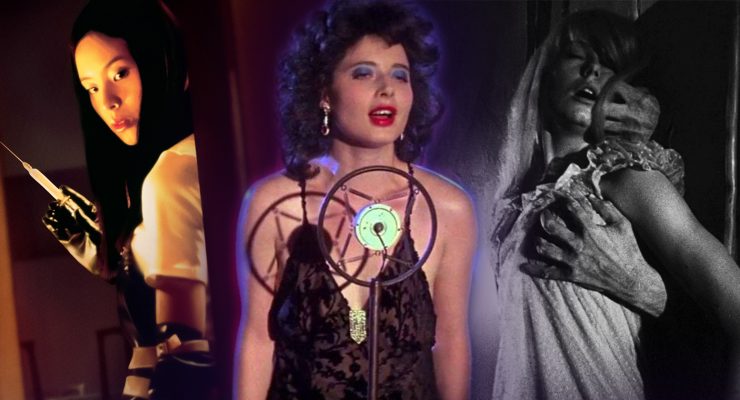Simon Columb reports from the BFI’s ‘Call it a Classic’ evening where a panel of industry experts discussed the question of what makes a film a ‘classic’…
In terms of lists and the definition of a ‘classic’, this really is the year to discuss the issue. Indeed, the combination of Sight & Sound’s ‘Greatest Films of All-Time’ poll and the 20th Anniversary of the BFI Film Classics series seemed time enough to discuss the issue itself.
The BFI managed to gather multiple sources that best represented the issue, including Edward Buscombe, an author himself (writer of The Searchers BFI Film Classic) and former Head of Pubishing at the BFI; Laura Mulvey, a well-established author since the 1970’s who has written the BFI Film Classic on Citizen Kane; Ben Walters author (alongside JM Tyree) of The Big Lebowski BFI Film Classic and James Bell, Features Editor at Sight & Sound and therefore heavily involved in the collection and publishing of the 2012 poll.
Francine Stock, presenter of BBC podcast ‘The Film Programme’ led the discussion by initially prompting a definition of the term ‘Classic’. It seemed that the older members of the panel, Buscombe and Mulvey, were in agreement that longevity is key. The idea that a film, despite all the odds, manages to break free from the constraints of the context it was released within and remains a consistent favourite. Vertigo’s everlasting themes of obsession. Citizen Kane and its everlasting tale of capitalism and isolation.
Ben Walters seemed to offer a slightly modern opinion on the issue, almost revealing (what I believe to be the case) that lists are null and void in the modern era. It’s nice to have lists and discuss the outcomes of course – but crucially, we all know it means very little. Whilst Buscombe and Mulvey chose to show a clip from The Searchers and Citizen Kane respectively, Walters chose The Big Lebowksi. I don’t recall seeing the film anywhere on the lists – but the clip he chose was more relevant as ‘The Dude’ inspects the trophies and panels the ‘Big’ Lebowski displays. Clearly a highlight towards the vanity that the lists, in and of themselves, offer. Indeed, when I read through the lists, I am looking at who chose what: Peter Bradshaw and Nick James chose In The Mood For Love; Mark Kermode chose Pan’s Labyrinth; Maybe it is because of who writes the list which makes it so important.
Personally, I was interested in the views they held about the bias within the list. Sight & Sound managed to improve the range and number of voters. In 2002, Sight & Sound used 145 ‘Top 10’ lists to create the previous list – this year, the number grew to 846 critics and academics from across the world. I believed that this would surely rock the foundations of the outcome – the more obscure films which were originally hidden from the vast majority would be squeezed out for the sake of modern and contemporary cinema, representing the new critics and academics that would surely shake the industry. It didn’t dramatically change things and, in fact, if anything ‘prove’ how immovable films like Renoir’s La Regle De Jeu, Ozu’s Tokyo Story and Dreyer’s The Passion of Joan of Arc.
I asked if there is a bias amongst critics – as if you have to separate the esteemed ‘classics’ from the personal favourites – the ‘guilty pleasures’. In answer to to my question, James Bell revealed that, when submitting his list, he ‘threw in’ a personal favourite – which I questioned further: Doesn’t that make the list redundant as critics will simply select the films that ‘must’ be there? Walters revealed that all his films were his personal favourites. Buscombe, inevitably perhaps, simply stated that maybe the films on the list are personal favourites.
An interesting point was made whereby it appears that the vast majority of films on the Top 100 are released in the 1950s and 1960s. Maybe there is a dominance of the older critics and academics noting their favourites – whilst the younger reviewers have become accustomed to always putting Citizen Kane in their ‘top films’ out of imitation and habit. James Bell explained that Sight & Sound sought 1500 critics and reviewers from across the world – and only achieved the 846 polled. Maybe the other critics would’ve changed the outcome?
Overall, a great evening and a discussion worth having. What is clear is that these lists are important, and the term ‘classic’ is important. It creates discussion and analysis. It forces us to acknowledge the past and respect the filmmakers that established a new view and outlook for film as an art form. And I am glad that Alfred Hitchcock tops George Lucas, and that Orson Welles tops Steven Spielberg – it simply wouldn’t have the ‘class’ – or credibility – the other way round.










